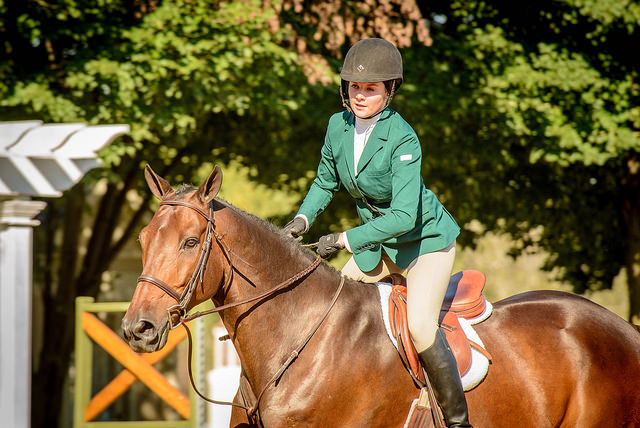Instant society encourages instant results.
But that is not how we or our horses operate. Going anywhere requires steps, landmarks along the way to define process.
How can you apply these three learning stages to what you are wanting to accomplish in your training right now?
1. The “Thinking” Stage

©EquestrianCoach.com
When you are first attempting to learn a skill, the focus is on gaining an understanding of how that skill is to be performed. Your trainer will likely explain, and perhaps even demonstrate, how to perform the skill. They will also instruct you on how to “talk” your way through the skill sequence.
For example, in order to get your horse to turn left, the instructions might be: “hold your right rein steady, and open up your left rein as if to guide him to the left. Apply pressure with your right leg to move him to the left.”
This way, you are left with a series of step-by-step instructions that you can use to “talk” your way through the skill performance. These series of instructions may at first be quite simplistic, or just enough to get you through the basic sequence.
A good rule of thumb at this stage is “one thing at a time.” Decide what it is you must focus on, and let the rest go, otherwise you may become overloaded and end up frustrated.
2. The “Connection” Stage

©Bob Haarmans / Flickr CC by 2.0
This stage is largely about practicing and perfecting, eliminating any movements you don’t need. As you practice, you will find yourself being less conscious of your execution of the skill. That is to say you will be “thinking” less and operating more on the “feeling” level. You will begin to be able to tell when you are off simply by how it feels, and you will no longer have to look to see whether you have your leg in the right place or what your hands are doing.
A great example of this is when you first learn how to get the right diagonal when you are doing a posting or rising trot. At first, you have to look to see when your horse’s shoulder is coming forward, but after awhile you are able to feel it, and later still you just do it automatically without even thinking consciously about it.
The connection stage can last anywhere from a few hours to a few months for more complex skills. Near the end of this stage you should have mastered the skill to the point where you can now attend to other aspects of your performance while doing the skill.
3. The “Flow” Stage

You reached the “flow” phase when you’re able to perform that skill at a maximum level of proficiency.
You should also now be able to perform the skill automatically, or without consciously thinking about it. In fact, at this stage verbal cues or attention to muscle movement can result in a disruption of skill execution. I’m sure you have all had the experience where you start to over think what you are doing and suddenly your performance seems to fall apart.
One way of thinking about this stage is that the skill has become “programmed” into your automatic repertoire. In the flow stage you are free to direct your attention to other aspects of your performance.
It should be noted that in order to keep the skill at this level you still require practice or the sequence may become rusty. It is not uncommon to lose some level of performance when attempting to “re-discover” a skill because you have to shift back into your “thinking” mode temporarily. However, once your re-learning is complete, your performance should be even better.
 About the Author
About the Author
April Clay is a rider and sports psychologist in Calgary, Alberta. Want to learn more about show preparation and mental toughness? Check out the Resilient Rider Online Course and the Confidence Factor at www.outofyourmindcourses.com.




 October 24, 2016
October 24, 2016 






















